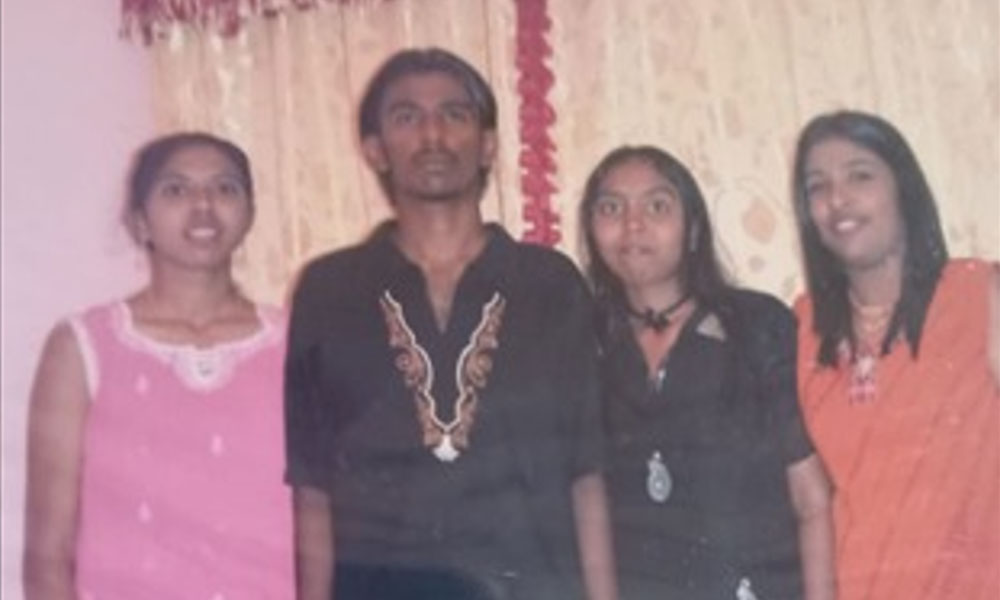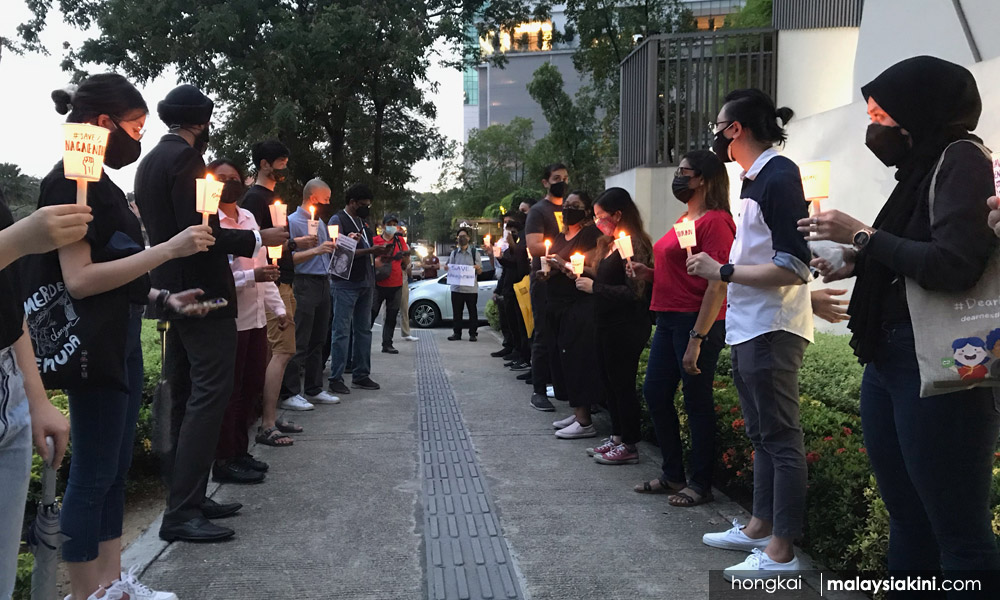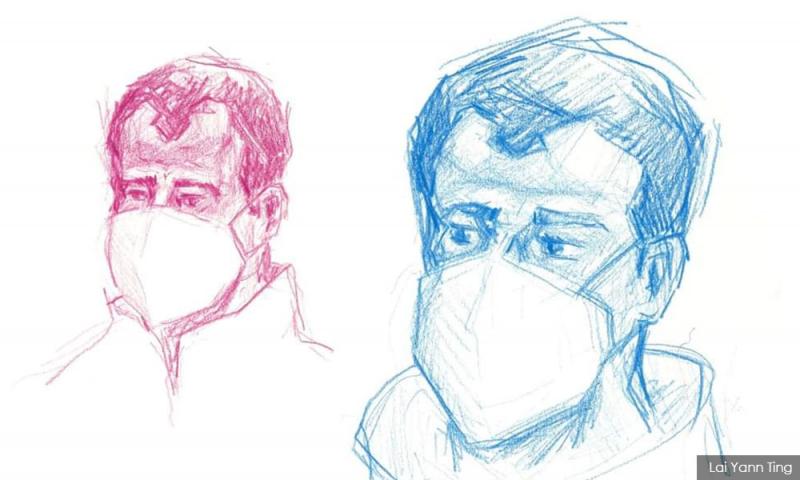COMMENT | The last time I saw death row inmate Nagaenthran
COMMENT | The moment he enters the courtroom, Nagaenthran K Dharmalingam's eyes search for his brother's, and they light up when he spots him.
While they wait for the court session to start - one sitting in the gallery, the other in the dock, both masked up - they communicate with each other wordlessly, in a way only siblings can.
A raised eyebrow, a tilt of the chin, a hand placed over the heart. “Have you eaten?” Nagen gestures to Navin. “No,” Navin replies. “Why not?” Nagen questions, affectionately chiding. It is startlingly ordinary, this exchange, in these circumstances.
The minutes before the court session starts in a death penalty case are a strange experience. They are a no man’s land.
Like Schrödinger's cat, there is a certain perverse freedom in this not knowing, before final, weighty pronouncements that rip hope from loved ones - like skin from flesh - are made.
In this liminal space and time, it feels like anything can happen. Even though we know the facts – the odds are overwhelmingly stacked against us, and in many ways, this judgment is a formality to follow through on what the court already made clear in the previous sitting – it still feels pregnant with possibility.
Maybe the judges have discovered something they previously overlooked, maybe the Attorney General’s Chambers changed its position, maybe there will be a moratorium, judicial mercy, another stay of execution so there is more time to consider arguments.
I am painfully aware that these moments the brothers have are sacred, and want them to go on for as long as possible. I pray that counsel will be late, or better, the hearing will be postponed again for some reason.
Working with death row prisoners
For loved ones and abolitionists who work with death row prisoners, deferment of grief is a vital coping mechanism. We focus on the micro-step ahead of us, and then on the one after it.

Confronting the planned state murder of someone you know to be as human – as beautiful, precious, and flawed – as you are, can be utterly paralysing otherwise.
First, you focus on each hearing of the trial, then the appeal, the clemency process, the last-ditch court applications, the campaign video, the petition, more clemency letters, protests, international advocacy, media interviews, travel arrangements for family members, and when the worst happens, funeral arrangements.
Till the very end, there is always something you can do.
Along this journey, there are some points in time when the possibility that this person’s life will be spared shrinks enormously, and it forces a reckoning.
The final judgment in a late-stage application - after clemency has been denied and all other legal avenues exhausted – is one such moment.
Judges’ decision
Navin stiffens next to me when the judges walk in. Less than a minute later, the chief justice informs us that Nagen’s applications are dismissed.
It is difficult to describe to anyone who hasn’t been to court for a death penalty case what this is like. Whether at that moment or for the rest of the court proceedings, none of the judges looks at Nagen, as far as I can tell. The prosecutors don't, either.
He is invisible to the people who demand, pass, and uphold his death sentence.
I turn to Navin, and he looks at me questioningly. I shake my head. He understands. He shakes his head back at me, and his eyes harden with pain.
The chief justice goes on to assert that the applications are baseless, an abuse of process, and reproaches the defence counsel and Nagen (whom they never refer to by name, only as ‘the appellant’), for filing these applications.
We are to believe that a desperate attempt to save a human life undermines the court’s sanctity. In my view, a court that sends people to the gallows has no such sanctity.

What is, in fact, sacred, is the conviction and determination anti-death penalty lawyers have to protect life at any cost to themselves, whether that is imprisonment, staggering fines, loss of license, attacks on their reputation, or whatever else is threatened.
Last words
After the judges leave, family members and friends are usually allowed to speak with the prisoner for a few minutes through a glass pane.
I’ve had the chance to join family members in speaking with death row prisoners in the past, including Nagen. I listen to whatever they have to say and publish it if they want me to because their voices urgently need to be heard.
At Nagen’s last hearing, I was able to speak to him, and I shared his message publicly. Very quickly, the rules have changed. At this hearing, just a few weeks later – what we now knew to be Nagen’s final court appearance – we aren't allowed to speak.
We are told that only immediate family members who are on a pre-approved list can see a prisoner in the dock after the guards have checked their identity cards.
Navin is allowed to see him, but Nagen’s cousin and I aren't admitted. Nagen is visibly upset by this. He repeatedly begs the guards to allow us in to see him. His request is denied.
Navin and Nagen immediately reach for each other’s fingers through the small slit in the window that separates them. Nagen kisses Navin’s hands and tells him over and over, “It’s my time to go.”
He is focused on reassuring his brother, giving him the strength to bear the unbearable. He even makes Navin laugh. He tells him to take care of their mother, to be good.
It is surreal to watch the two of them interact so tenderly, so innocently loving, each determined to provide what little comfort they can to the other.
I will never understand how human beings find such grace even when everything has been taken from them so violently. I think then of the people who say that last-ditch attempts give people on death row and their families false hope.

Without this application, Nagen would already be dead, and Navin wouldn't have had these moments with him. I have yet to come across a family member who wouldn't do everything to have just a little more time together.
When their time is up and Navin returns to us, Nagen asks to walk past us on his way out of the dock, so he can momentarily get a little closer to us.
It is such a small request that wouldn’t have cost anyone anything. This is a man whose death sentence has just been upheld, and it is his last chance to see, just a few steps closer, some of the people who care for him. The guards refuse.
He becomes distressed and tries to insist, and we gesture to him that it's okay, don't push. We are terrified that he will be punished for stepping out of line.
He looks at me then with an expression that I still haven’t found the words to describe. Grief comes closest, but in his face, there is also compassion, clarity, gratitude, and something like a transcendent sense of amusement at this senseless cruelty.
My last shred of resolve to stay composed leaves me then. As the guards handcuff him, before he turns and leaves the courtroom for the last time, Nagen yells out to me, smiling, “Thank you for everything! Pray for me!”
I don’t think I will ever see Nagen again, but I don’t think there are many faces and moments that will etch themselves as deeply in my consciousness.
Fight goes on
Three days ago, Nagen’s family received yet another clemency rejection in two banal bullet points.
This, despite a petition signed by over a hundred thousand people; personal clemency appeals hand-delivered by many Singaporeans to the Istana; collective statements by hundreds of healthcare workers, arts workers, environmentalists, legal sector workers, social workers, people with disabilities, death row prisoners’ family members, drug users/ex-users and their loved ones; pleas from numerous embassies, the constitutional monarch of Malaysia, the European Union, international human rights groups, and more.

As I write this, I am not sure what I hope it will do. I just know it is important to chronicle the fleeting ways in which I have encountered Nagen’s spirit and how it refuses to be crushed.
I don’t believe it has the power to help Nagen, but it helps me remember that in the face of administrative evil and a murderous state, we cannot, must not, surrender our humanity.
While Nagen is alive, we fight on. And if his life is taken, we will still fight on too, because that is what every death row prisoner asks, “If not for us, for the others. There are so many others. They still have a chance.”
KOKILA ANNAMALAI is a writer and community organiser who advocates against the death penalty in Singapore. This article is republished with her consent.
The sketches are of Nagaethran at his last court appearance and are by artist Lai Yann Ting.
Nagaenthran K Dharmalingam, 34, is a Malaysian sentenced to death in Singapore for trafficking 42.72g of heroin in 2009. His family sought clemency arguing he is intellectually disabled and has an IQ of 69, but the Singapore court found him not intellectually impaired. His final appeal was dismissed on March 29. He now awaits execution.
The views expressed here are those of the author/contributor and do not necessarily represent the views of Malaysiakini.
RM12.50 / month
- Unlimited access to award-winning journalism
- Comment and share your opinions on all our articles
- Gift interesting stories to your friends
- Tax deductable
